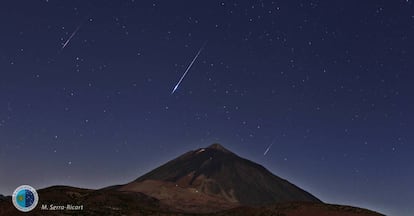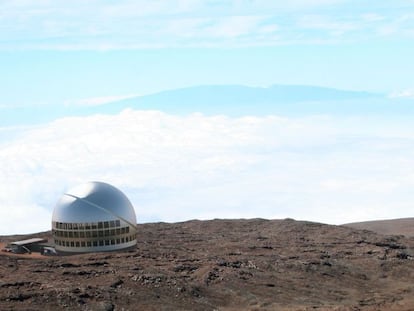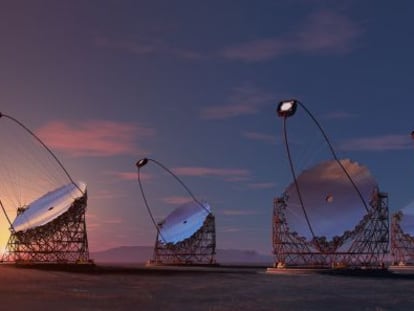Perseids 2016: How to see the summer’s most spectacular meteor shower
This Friday and Saturday night you can watch the "Lagrimas de San Lorenzo" from a dark spot far from city lights, or from your computer screen

As far as meteor showers go, the Perseids occupy a special place in the skies. They’re so well-known that references to them can even be found in Chinese records from 36 AD. They have an impressive meteoric resume. The name Las Lágrimas de San Lorenzo came into use much later, during Medieval Europe, to honor the Catholic martyr.
“Shooting stars” are actually just different-sized particles of dust, some finer than a grain of sand, that comets and asteroids leave behind during their orbits around the Sun. The resulting particle cloud (called meteoroids), thawed by the Sun’s heat, disperses in the space around the comet, and every year our planet crosses through it during our orbit around the Sun. During this meeting, the dust specks disintegrate upon their high-speed entrance into Earth’s atmosphere, creating those famous streaks of luminescence, referred to scientifically as meteors. From our point of view, all the trajectories of different shooting stars converge into a point of the sky called the radiant. The constellation where that radiant point is found determines the name of the meteor shower. Thus, the Perseids meteor shower is found in the Perseus constellation, while the Geminids are found in the Gemini constellation.
A shooting star is nothing more than a small particle that emits light upon hurling high-speed into Earth's atmosphere due to sudden heat caused by friction
According to standard models, the Perseids’ activity will include about 100 meteors per hour (Zenithal Hourly Rate). Like every year, the Perseids’ reach their peak in the middle of August. For 2016, with maximum visibility expected between 13:00 and 15:30 UT/GMT. While they’re active between July 17 and August 24, the nights of August 12 and 13 will be the best moment to observe the shower. A large number of meteors can also be observed the night before, from late August 11 into the early hours of August 12. A crescent moon, which will disappear for the second half of the night, should not pose a problem for seeing the Perseids; on average, a stargazer will be able to see one every two minutes, including some very bright ones (due to the high speeds at which they enter into the atmosphere) for those watching from dark places with clear horizons, far from light contamination.
One of Perseids' progenitors is the comet Swift-Tuttle, discovered in 1862. In the years around Swift-Tuttle’s perihelion (the point of the orbit at which a meteorological body gets closest to the sun, last in 1992 and not expected again until 2126) activity can grow to 400-500 meteors per hour because of the density of the meteoroids that circle and accompany the comet. However, the Perseids are known for their “outbursts” provoked by the gravitational influence of Jupiter and Saturn on the meteoroid dust clouds created by comets from the past. In 1839, German observer E. Heis recorded for the first time the maximum rate of the Perseids: 160 meteors per hour. The last meteor outburst was in 2009, measuring in at 250 meteors per hour. According to the model of Russian astronomer Mikhail Masloc, this August we could witness a jump in Perseids activity. “The disturbance coming from Jupiter will cause the elevated activity of the Perseids this year. The last increase was in 2004, also caused by the Giant planet,” Maslov tells SkyLive.tv.
Jupiter got the closest it’s been to the orbit of the Swift-Tuttle comet in November 2014, when it came within 237 million kilometers. It takes 22 months for the meteoroid current to be pushed towards Earth. Will activity go up in 2016?
How to watch the meteor shower live?
Spain has one of the cleanest and clearest skies on the planet from which we can watch 2016’s Perseids. The European project STARS4ALL, in collaboration with skylive.tv, will offer live streaming of the Perseids. From the Observatories of the Canary Islands, astronomer Miquel Serra Ricart will present two programs:
On average, a stargazer can see one shooting star every two minutes, including very bright ones if you watch from a dark place far from light pollution
Program 1: August 12 19:30-19:45 UT (August 12 21:30-21:34 CEST)
Program 2: August 12 23:12-23:30 UT (August 13 1:15-1:30 CEST)
STARS4ALL and skylive.tv, in addition, will broadcast an image of the sky from El Teide and El roque de los Muchachor for four hours or or on these nights, so that spectators can enjoy the shower from their homes, make their own calculations, or save and edit the footage.
Three Spanish Supercomputer centers – Centro Extremeño de Tecnologías Avanzadas (CETACIEMAT), Consorci de Serveis Universitaris de Catalunya (CSUC) and Instituto de Astrofísica de Canarias (IAC) – will collaborate in distributing the retransmittions through the web portal skylive.tv.
STARS4ALL is a project financed by the European Union’s Program H2020, until the contract number 688135. Eight separate institutions from six European countries work under the umbrella of STARS4ALL (UPM, CEFRIEL, SOTON, ECN, ESCP Europe, IAC, IGB and UCM). Its objective is to make the population more aware of the problem of light pollution in many of our home cities, emphasizing the importance of taking measures to reduce the contamination as much as possible.
English version by Allison Light.
Sign up for our newsletter
EL PAÍS English Edition has launched a weekly newsletter. Sign up today to receive a selection of our best stories in your inbox every Saturday morning. For full details about how to subscribe, click here
Tu suscripción se está usando en otro dispositivo
¿Quieres añadir otro usuario a tu suscripción?
Si continúas leyendo en este dispositivo, no se podrá leer en el otro.
FlechaTu suscripción se está usando en otro dispositivo y solo puedes acceder a EL PAÍS desde un dispositivo a la vez.
Si quieres compartir tu cuenta, cambia tu suscripción a la modalidad Premium, así podrás añadir otro usuario. Cada uno accederá con su propia cuenta de email, lo que os permitirá personalizar vuestra experiencia en EL PAÍS.
¿Tienes una suscripción de empresa? Accede aquí para contratar más cuentas.
En el caso de no saber quién está usando tu cuenta, te recomendamos cambiar tu contraseña aquí.
Si decides continuar compartiendo tu cuenta, este mensaje se mostrará en tu dispositivo y en el de la otra persona que está usando tu cuenta de forma indefinida, afectando a tu experiencia de lectura. Puedes consultar aquí los términos y condiciones de la suscripción digital.
More information
Últimas noticias
From Andorra to Gibraltar, a black market for Ozempic exploits its success: ‘They’re the most sought-after products in the world’
From Hungary’s Orbán to Chile’s Kast: How Trump helps turbo charge the far right
Magnets in their heads: How some animals guide themselves using the Earth’s magnetic field
The brief rise and retreat of Generation Z in Mexico
Most viewed
- Why we lost the habit of sleeping in two segments and how that changed our sense of time
- Trump’s obsession with putting his name on everything is unprecedented in the United States
- Charles Dubouloz, mountaineering star, retires at 36 with a farewell tour inspired by Walter Bonatti
- The Florida Keys tourist paradise is besieged by immigration agents: ‘We’ve never seen anything like this’
- Living in a motorhome due to soaring housing prices in Madrid: ‘I got used to it quickly, but I don’t idealize it’










































